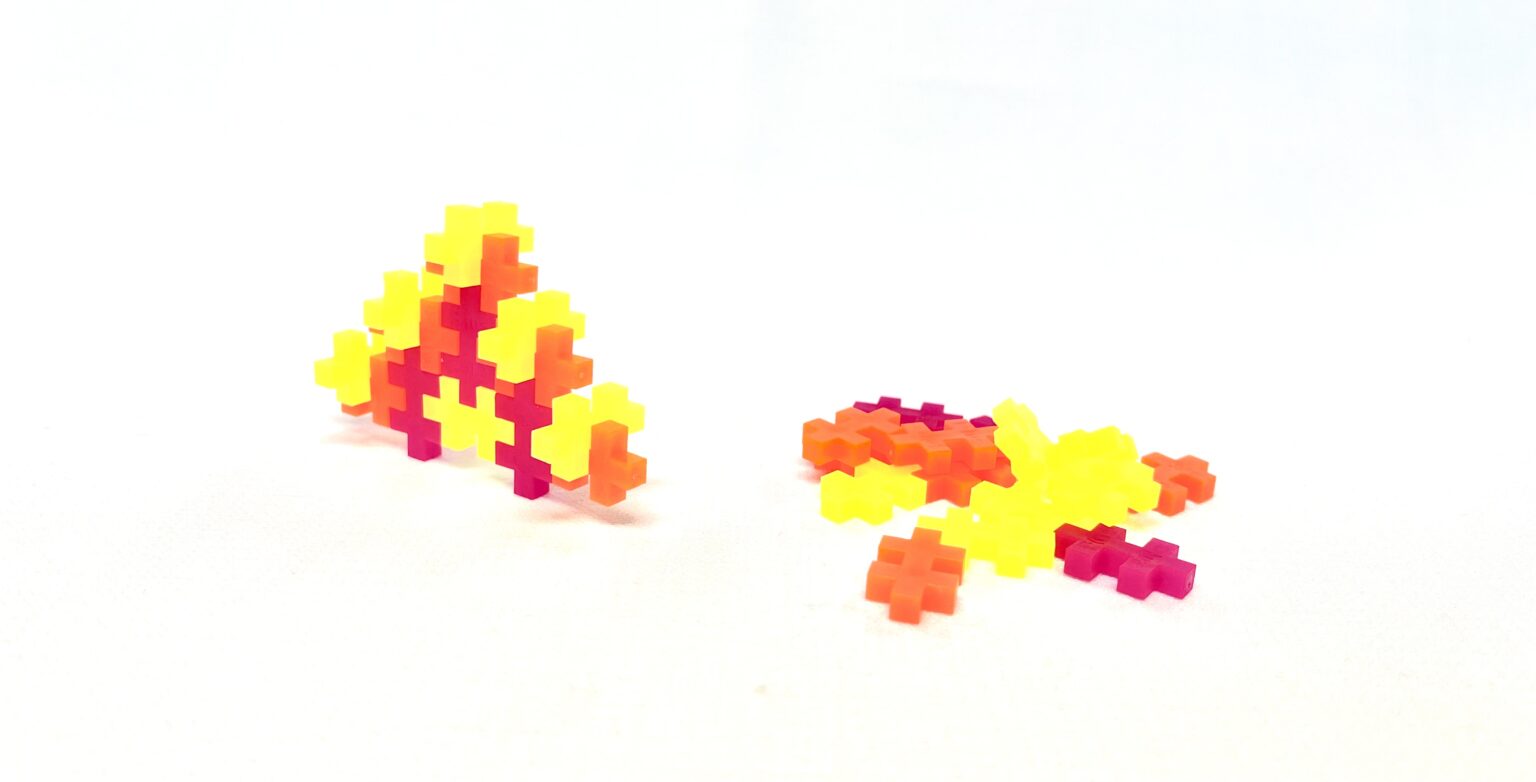Solo – Build a secret figure with roles
We each build a secret figure. Then we take turns building each other’s figure with the roles of Builder and Instructor. The aim of the activity is that we practice our construction skills and that we build confidence with the materials and the routines.

Procedure
Framework
Suggestion for introduction
We create a motivating framework for the child.
For example, we can say: “First, we each build a secret model. Then we use two roles to build each other’s model: The Builder and The Instructor. The Instructor has to explain what their secret figure looks like and what the builder should do. The only rule is that we cannot see the other’s figure before we are finished. Then we switch roles, so we both copy each other’s secret figure.”
Time
The activity can be adapted to the framework of one lesson and varied according to the time available and the child’s prerequisites.
Materials
We need some kind of cover, like a box. We also need Lego sets, wooden blocks, colored cubes, magnetic tiles, paper, or something else. First, we each build a small figure from 15 blocks. The 15 blocks + 10 extra is gathered in a small pile.
During the activity
During the play session, the child encounters challenges and successes, where we can stop and help spot what is difficult or what is going well. We can do this in several ways:
Reflection routines
When we get the opportunity to reflect together with the child on what challenges or discoveries arise along the way, we can use one or more reflection routines. It could be, for example, a learning metaphor with a social strategy that we practice, an emoji that describes the feeling we have right now, or a rating of how well we think the building is going. In this way, a reflection routine can help to show and put into words the experiences that the child has during the play session.
Facilitating questions
We can ask facilitating questions to the child along the way, as they naturally arise in the building process. In this way, we facilitate the play session so that we continue the play and at the same time learn something from it. For example:
- I see that you have stopped building. I wonder how we can continue from here?
- I see that you have encountered a challenge. Should we try to solve it together?
- Try to notice what you are doing right now. Do you think this is a collaborative strategy?
Show and Tell
Finally, in the play session, we give a Show and Tell of our construction, so that we have the opportunity to share our experiences, reflections, and feelings about the construction process.
First, we talk about our model and the process of building it. During the Show and Tell, we can use reflection routines and reflective questions to support the discoveries that have been made. For example:
- What went well?
- What was difficult?
- Is there anything that you want to do differently the next time we build and tell?